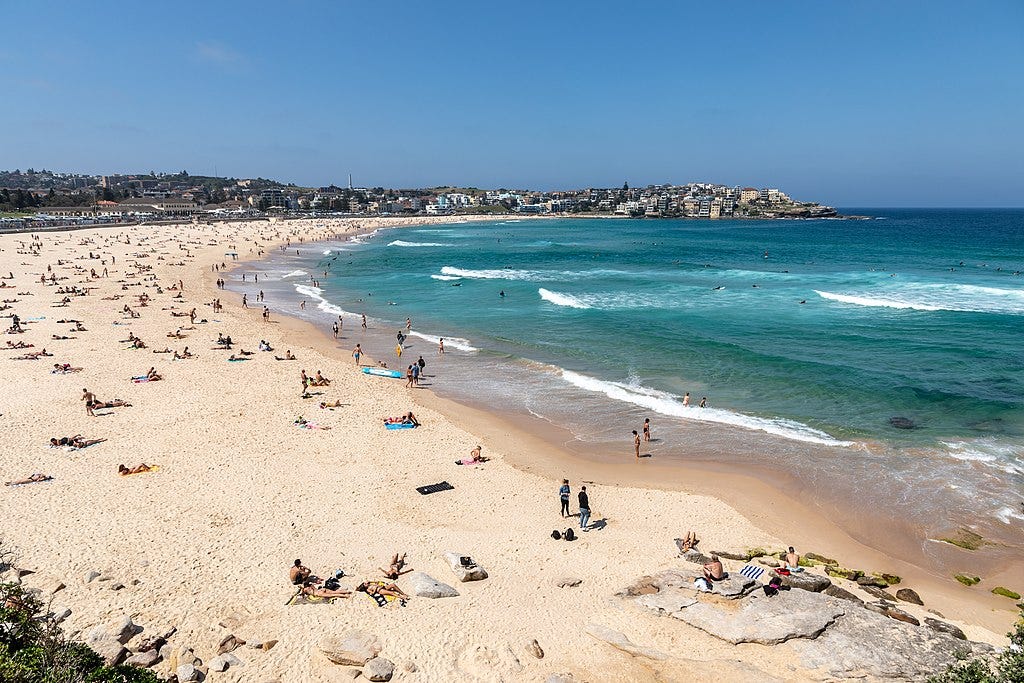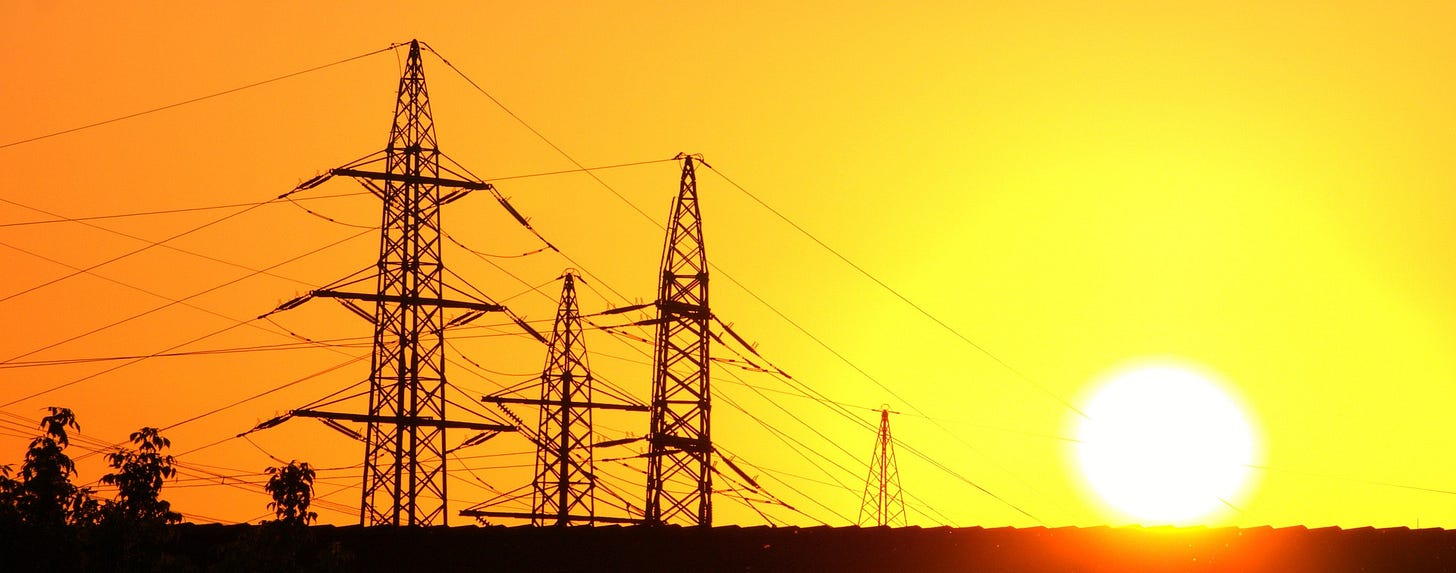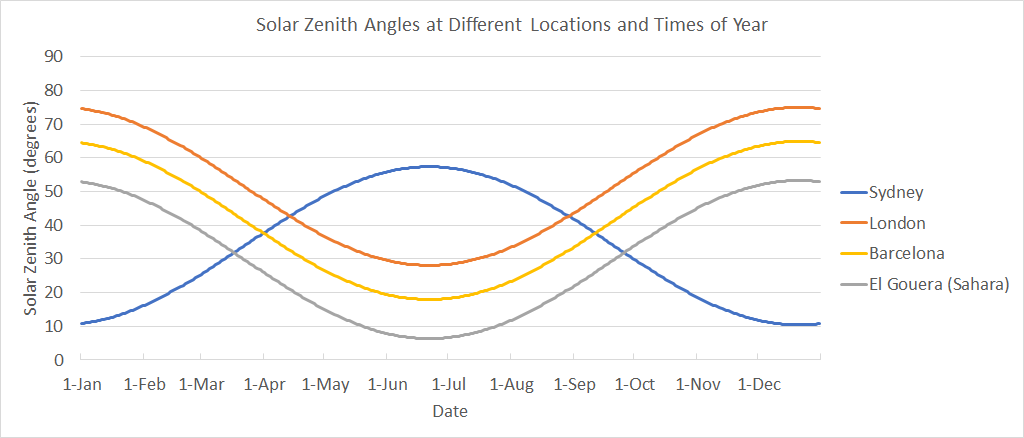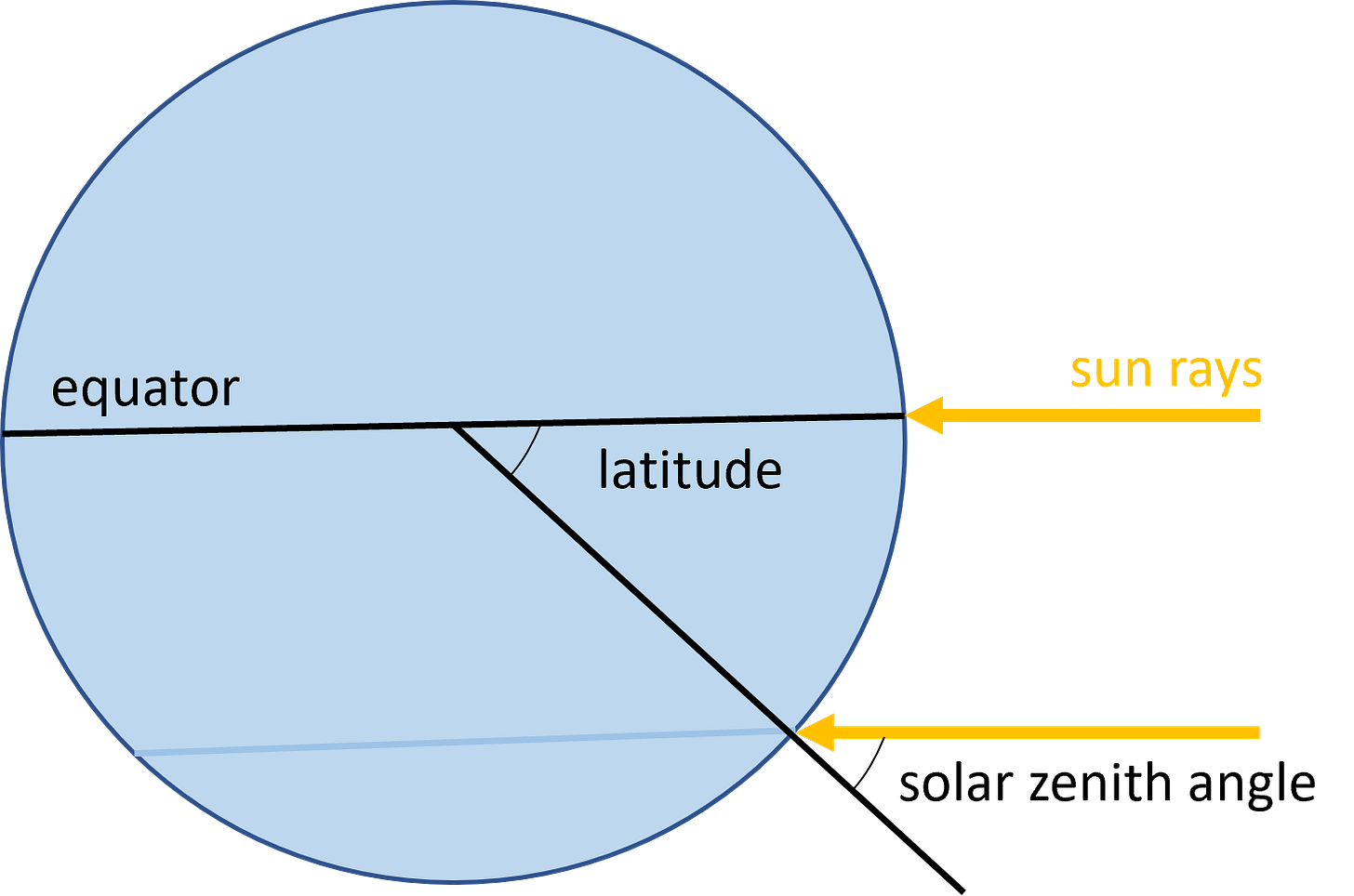Like Sunbathing in the Sahara: The Science of Sydney Sunburn
I love a radiation burnt country.
With sharks, crocodiles, spiders, snakes and deadly jellyfish, Australia has a reputation for danger. This is mostly undeserved. In truth, the most dangerous animals in Australia are horses and cows, which together account for more deaths than all native animals combined. Finding a killer spider in the bedroom seems much more terrifying than a horse ride through the countryside, but the reality is multiple Australians die every year from falling off horses while no one has been killed by a spider in Australia for over forty years. Our instincts often make us see danger in the wrong places.
Nowhere is this truer than when it comes to one of Australia’s real dangers – the sun. For every Australian killed by a crocodile or shark, hundreds die from skin cancers attributable to sun exposure. European visitors with an acute awareness of Australia’s deadliest animals often arrive complacent about the need for sun protection. This is understandable. They may be accustomed to spending hot summer days in the sun in London or even Barcelona without getting more than a mild tan. However, they quickly learn that the same behaviours in Sydney lead to severe sunburn, often within hours of arriving.

It is natural to assume that our sunburn risk depends on the weather. However, this is surprisingly wide of the mark! Instead, we will see how science shows us that a more important factor is where you are in the world. Sitting unprotected on a summer’s day in Sydney is very different from doing the same in London, even when the weather is just as hot and sunny. In fact, it is rather more like sunbathing in the Sahara.
Shedding (Ultraviolet) Light on Sunburn Risk
We typically associate being burnt with touching something hot. Such burns are thermal burns. Since the sun is so hot, we may imagine that it burns us in the same way a stove or fire does. However, more careful thought shows this cannot be true; we may well become sunburnt while sitting in the heat of the sun, but we can sit inside a room just as hot without ever becoming sunburnt. Sunburn cannot just be about heat.
Instead, sunburn is an example of a different kind of burn – radiation burn. The radiation that causes such burns is not itself hot, but carries a large amount of energy that is absorbed by the skin. This absorbed energy can damage essential biological material such as DNA and kill skin cells. In the case of sunburn, the radiation is ultraviolet (UV) radiation. This is an invisible but high-energy form of light that is emitted by the sun. Unlike heat, which stays around in the air and can be re-emitted by our surroundings, we can only be exposed to UV radiation directly from the sun. This means that the only factor that matters for our sunburn risk is how much of the sun’s UV radiation is hitting our skin.
The dominant factor determining how much of the sun’s radiation shines on us is how high the sun is in the sky. To see this, imagine shining a torch at night. If you shine it straight down on a patch of ground, the patch is lit up very brightly. If you instead shine the light at a shallow angle far in front of you, a larger area of ground is illuminated but this illumination is far dimmer than before. This is because the same amount of light hits the ground, but the light is now spread over a far larger area, so each patch of ground receives less light. The sun’s radiation works the same way. When the sun is shining straight down on us from directly overhead, far more sunlight hits each patch of ground (or our skin) than when the sun is shining at a shallow angle from lower in the sky. While UV radiation is invisible, its intensity is just like that of visible light. This means that how much UV radiation hits each patch of your skin when you stand in the sun depends on how high the sun is in the sky.
In fact, this is even more true for UV radiation than visible sunlight. This is because the effect is amplified further by the ozone layer. Ozone is a gas that is transparent to visible light, but very effective at absorbing UV radiation. In the stratosphere, about 15-40 km above our heads, there is a significant quantity of ozone. This ozone absorbs a substantial proportion of the UV radiation that would otherwise hit the Earth, and so acts like a protective layer of sunscreen around the whole Earth. The higher the sun is in the sky, the more quickly and directly its radiation passes through the ozone layer. This means that the ozone layer has much more chance to absorb UV radiation when the sun is nearer the horizon than when it is directly overhead. So the amount of UV radiation that reaches our skin is even more dependent on how high the sun is in the sky than is the amount of visible sunlight.
Compared to the height of the sun, other factors are far less significant in determining the amount of UV you are exposed to. The temperature has no effect. Even clouds absorb a smaller proportion of UV radiation than they do visible light, and so have deceptively little effect. When it comes to sunburn, cool overcast conditions obscuring the sun high in the sky are far worse than warm, bright sunlight coming from near the horizon. This means that the high risk of sunburn in Sydney is not simply a result of there being a lot of sunny days; it is all about why the Sydney summer sun is so high in the sky.

Why is the Sydney Sun So High in the Sky?
The most important factor in determining the height of the sun in the sky is the time of day. The sun is low in the sky close to sunrise and sunset, and at its highest around midday. This means that sun exposure in the middle of the day is far more damaging than in the early morning or late afternoon, even when the weather is not much warmer. However, this cannot account for why the sunburn risk in Sydney is so much higher than in London. Indeed, summer days are much longer in London than in Sydney, so there are actually more hours when the sun is closer to its highest point.
However, the highest point the sun reaches in the Sydney sky is much higher than in the London sky. Imagine pointing one of your arms straight upwards, and the other towards the sun at midday.1 The angle between your arms is called the solar zenith angle. On the spring and autumn equinoxes — the days in March and September when day and night are the same length — the midday sun is directly overhead at the equator, meaning the solar zenith angle there is 0°. The further you move from the equator, the closer the midday sun is to the horizon. In fact, the solar zenith angle on the equinoxes is exactly the same as the latitude of your location.2 This means in Sydney it is 34°, while in London it is 52°. This is the essential reason why UV exposure is more extreme in Sydney than in London; the sun peaks higher in the sky in Sydney because it is at a lower latitude.

However, a solar zenith angle of 34° is a long way from directly overhead, so this does not fully explain why sunburn in Sydney is so extreme. To understand this, we must account for the effect of seasons. Because the Earth is tilted at an angle of 23.5°, the latitude at which the sun is directly overhead shifts throughout the year. Specifically, this latitude shifts between the Tropic of Cancer (23.5° north) in late June to the Tropic of Capricorn (23.5° south) in late December. The solar zenith angle at any location is offset by this shift. This means that in the middle of summer the midday sun is 23.5° closer to directly overhead, while in the middle of winter it is 23.5°closer to the horizon. This is why the risk of sunburn is so much higher in summer than winter.
In London, the sun is closest to overhead in late June, when the solar zenith angle is 28°. By late August, when Londoners still hope to enjoy warm summer days, the solar zenith angle has already increased to over 40°, meaning that even at midday the sun is almost as close to the horizon as to overhead. Even in sunny Barcelona, the midday sun is always at least 18° from directly overhead, and it is closer to the horizon than overhead by the end of September. This may be why Europeans are so accustomed to exposing themselves to the summer sun with relatively mild consequences.

By contrast, Sydney’s solar zenith angle is only closer to the horizon than overhead for three months of the year. By the end of winter, the sun is already closer to overhead in Sydney than in London. By Christmas, the Sydney sun is just 10° away from directly overhead. This is comparable to a typical summer day in the Sahara. This is the reason it is so easy to get sunburnt in Sydney. Spending Christmas at the beach or a sunny picnic without sun protection will expose you to as much UV radiation as if you spent a summer day sunbathing in the Sahara.
Science for Everyday Life
If you had to spend a summer day in the Sahara Desert in your underwear, you would stop at nothing to make sure you had the best sun protection. By contrast, you might shrug off taking a hat and sunscreen before spending Christmas in your swimmers at Bondi Beach. But our analysis shows that you will be exposed to just as much UV radiation in both cases. Science helps us see that these seemingly entirely different scenarios present just as much risk of sunburn.

This is a reminder of how understanding science can help guide us in life. Today, we have an abundance of information available to help us make good decisions. However, it is only when we understand the science behind this information that we know how to use it. By knowing that it is UV exposure, not any other aspect of the weather, that determines our sunburn risk, we see that we should consult a real-time UV index when deciding whether to put on sunscreen before going out. By learning that UV exposure is determined by the height of the sun in the sky, we can see why we must be especially cautious in summer in places like Sydney. This understanding can motivate us to wear sun protection and minimise our exposure to the midday sun.
The poet Dorothea Mackellar wrote of Australia “I love a sunburnt country.” Spending Christmas at a Sydney beach, it is difficult not to share her love. But we should not forget how the intensity of the sun’s UV radiation also makes Australia a dangerous country. After all, the Australian summer has a very different feel to it if we translate Mackellar’s words into the language of science and think to ourselves: I love a radiation burnt country.
Midday here refers to when the sun is at its highest point in the sky. When daylight savings is active, as it is in Sydney in summer, this actually occurs at 1 pm.
The below diagram shows why the latitude is the same as the solar zenith angle when the sun is directly overhead at the equator. The latitude is given by the angle at the centre, while the angle at the circumference is the angle between directly overhead (shown in black) and the sun’s rays at midday, which is the solar zenith angle. These are corresponding angles in parallel lines and so are equal.


